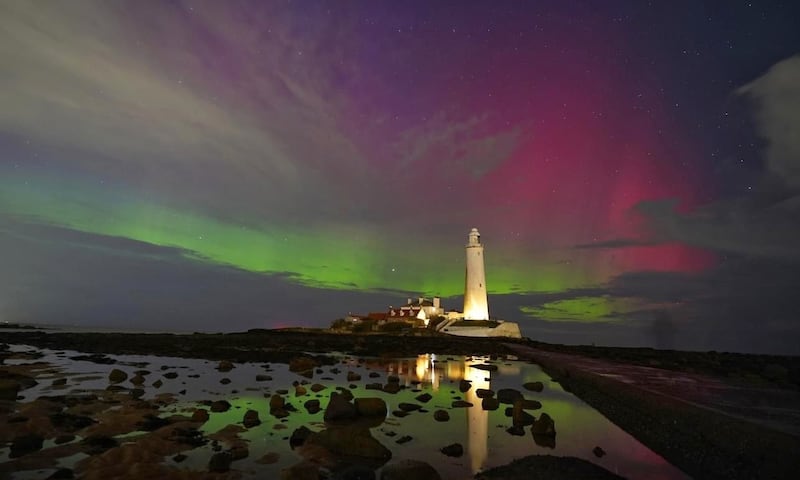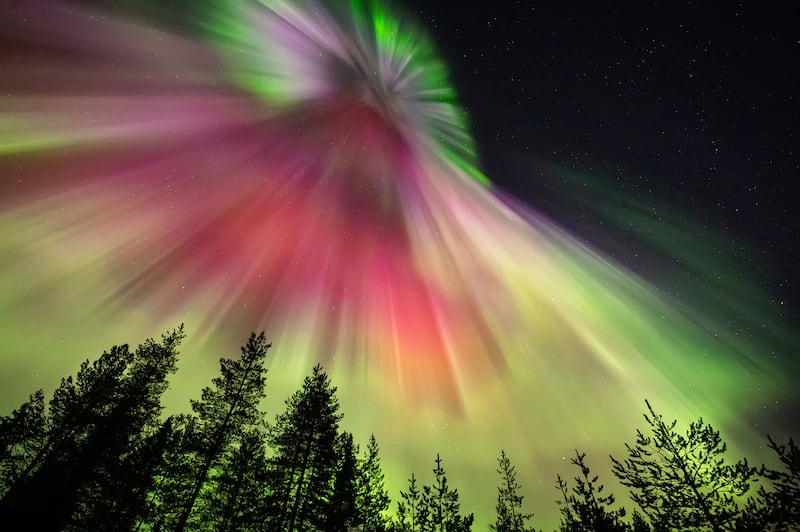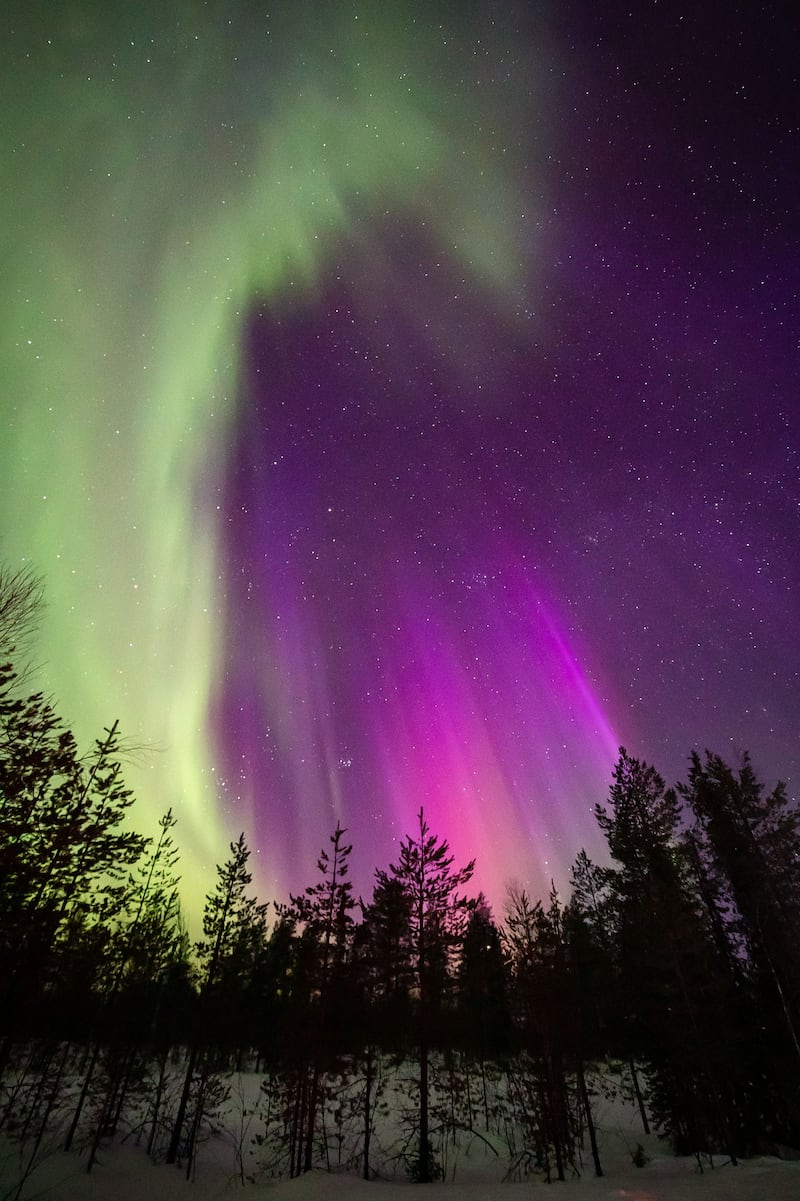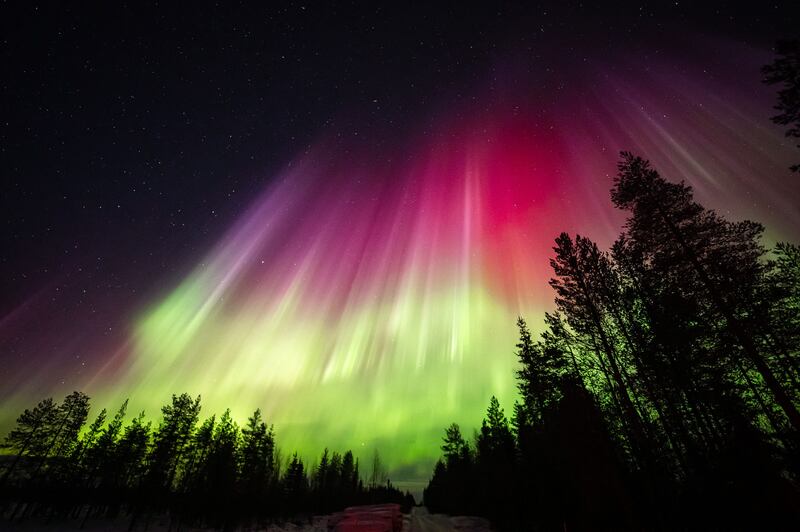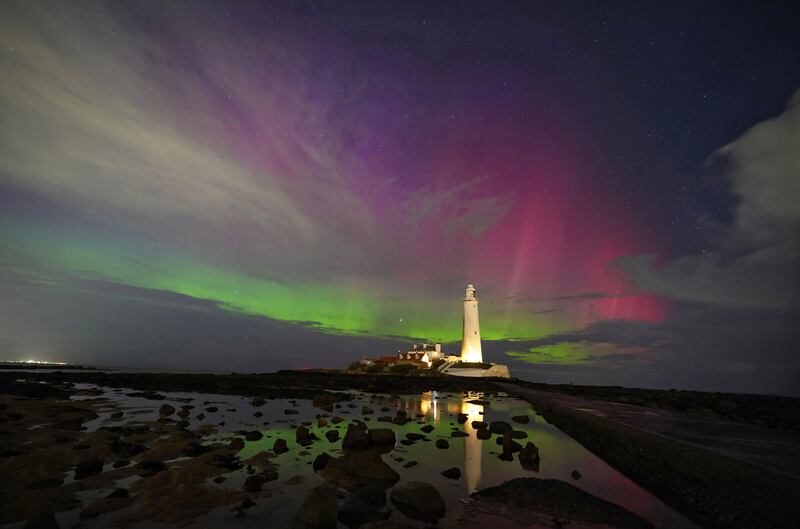The aurora borealis, usually restricted to Artic locations, slipped south into the skies over Britain on Thursday.
The Northern Lights were seen as far south as northern England and Wales.
The natural phenomenon is most commonly seen near the Arctic Circle, with Finland and Alaska prime viewing locations.
The lights occur due to disturbances in Earth's magnetosphere, when electrically charged particles from the Sun enter the atmosphere. They are usually concentrated around the magnetic poles.
While the aurora borealis occurs in the Northern Hemisphere, the aurora australis can be seen in the Southern Hemisphere.
The UK's Met Office said the display over England was due to a coronal mass ejection — an immense expulsion of plasma from the Sun's corona.
While people in the UK rushed outside to see the lights, some Swedish residents were only able to see an imitation due to an experiment on space weather.
Researchers at the Swedish Institute of Space Physics launched a rocket from the Esrange Space Centre in the country's far north to release firework-like materials into the sky at an altitude of between 100km to 200km.
Waves of greenish-white lights could be seen across the dark sky right after 1830 GMT above the northern Swedish town of Kiruna and within a 200km radius.
But they were somewhat less spectacular than the real Northern Lights and the experiment ended up blocking out the real aurora borealis.
The experiment was part of research aimed at helping scientists improve near-space weather forecasts to protect satellites and critical infrastructure.
“People nowadays cannot imagine life without GPS, without TV, without satellite TV, without mobile phones and so on,” said Tima Sergienko, lead scientist of the experiment.
“And to have all of this, we need to understand space weather.
“In some cases when we have strong ionic activity, all this stuff can be destroyed due to space weather.”
